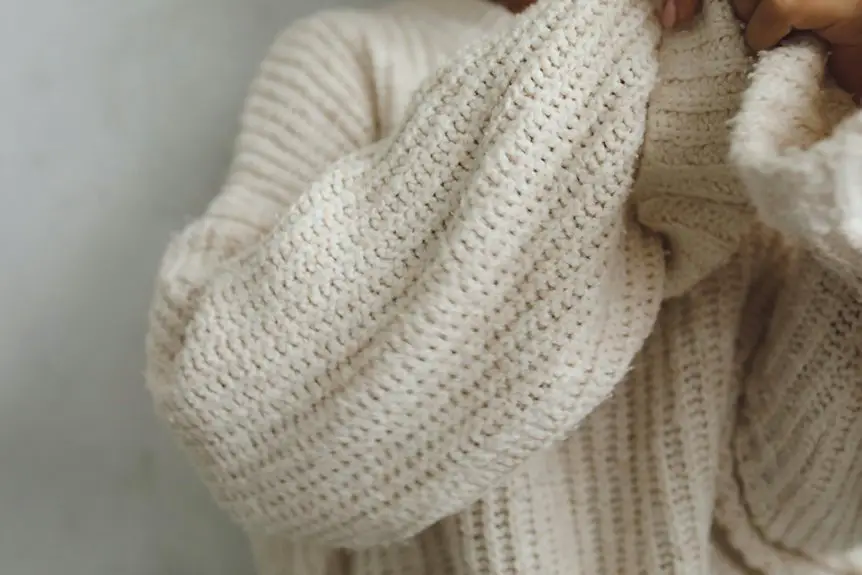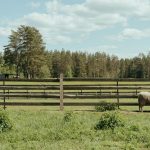Just like the layers of an onion, winter layering requires a thoughtful approach to fabric choice. You need something that’ll keep you warm without weighing you down. Fleece is often hailed as a top contender, but have you considered the natural warmth of wool or the sleek feel of silk? Each fabric has its strengths, and the right one for you may depend on your winter plans and personal preferences.
Table of Contents
Key Takeaways
- Wool offers incredible warmth and is breathable, making it ideal for both active and casual winter layering.
- Fleece provides excellent insulation while being lightweight and breathable, perfect for outdoor activities.
- Polyester is versatile, lightweight, and dries quickly, making it suitable for layering in unpredictable weather.
- Silk retains heat, wicks moisture, and adds a luxurious touch, effective for layering under heavier garments.
- For maximum warmth, consider a down layer; however, it lacks breathability compared to other options.
Understanding Fleece: The Lightweight Contender
When you think about layering for winter, fleece often stands out as a lightweight champion. This versatile fabric is made from synthetic fibers, providing excellent insulation without the bulk. You can easily toss on a fleece jacket or hoodie over a base layer, and it won’t weigh you down.
Plus, fleece is breathable, allowing moisture to escape while keeping you warm. Its soft texture makes it comfortable against your skin, and it comes in various styles and weights, so you can find the perfect fit for your needs.
Fleece is also quick-drying, making it ideal for outdoor activities. By incorporating fleece into your winter wardrobe, you’re ensuring warmth without sacrificing mobility or comfort.
Exploring Wool: Natural Warmth and Comfort
Fleece is just one option for lightweight winter layering, but wool deserves your attention too. Its natural fibers provide incredible warmth while being breathable, making it perfect for both active and casual wear. Wool’s moisture-wicking properties keep you dry, and its softness guarantees comfort against your skin. Plus, it’s available in various weights, giving you flexibility in layering.
| Property | Wool |
|---|---|
| Insulation | Excellent |
| Breathability | High |
| Moisture-wicking | Yes |
| Durability | Long-lasting |
| Eco-friendliness | Biodegradable |
The Role of Polyester in Winter Layering
Polyester is a popular choice for winter layering, thanks to its lightweight and versatile nature. It’s moisture-wicking, which means it helps keep you dry by pulling sweat away from your skin. This property makes it ideal for those chilly days when you’re active outdoors.
Additionally, polyester dries quickly, so if you encounter unexpected moisture, you won’t be stuck in damp clothes. The fabric also provides excellent insulation without bulk, allowing you to layer effectively without feeling weighed down.
You can easily find polyester blends that enhance breathability and warmth, making them perfect for chilly conditions. Overall, incorporating polyester into your winter wardrobe guarantees you stay comfortable, warm, and ready for whatever winter throws your way.
The Luxurious Benefits of Silk
While many fabrics offer warmth, silk stands out for its luxurious feel and unique benefits in winter layering. You’ll love how silk not only retains heat but also wicks away moisture, keeping you dry and comfortable.
Its natural temperature-regulating properties mean you won’t overheat, even in varying winter conditions. Plus, silk’s smooth texture feels divine against your skin, making it a perfect base layer. You can easily layer it under heavier garments without feeling bulky.
Choosing silk also adds a touch of elegance to your winter wardrobe—its sheen elevates any outfit. With silk, you’re investing in a fabric that combines comfort, warmth, and style, ensuring you look and feel your best throughout the chilly season.
Comparative Analysis of Fabrics for Winter Activities
When it comes to choosing fabrics for winter activities, understanding the strengths and weaknesses of each option is essential. You want materials that keep you warm but also allow for movement and breathability. Here’s a quick comparison:
| Fabric | Warmth | Breathability |
|---|---|---|
| Wool | High | Moderate |
| Fleece | Moderate | High |
| Synthetic | High | Moderate |
| Down | Very High | Low |
Wool’s natural insulation works well for cold hikes, while fleece is great for layering due to its breathability. Synthetic fabrics excel in moisture-wicking properties, and down offers unmatched warmth, but it lacks breathability. Choose wisely based on your winter activities!
Frequently Asked Questions
Can These Fabrics Be Recycled After Use?
When it comes to recycling, you can’t judge a book by its cover. Many lightweight fabrics can be recycled, but it depends on the material. Always check local guidelines to guarantee proper disposal.
How Do These Fabrics Perform in Wet Conditions?
In wet conditions, these fabrics often struggle to retain warmth. You’ll find they can become heavy and lose insulation properties. It is crucial to choose water-resistant options if you want to stay comfortable and dry.
What Are the Environmental Impacts of Production?
You’ll find that producing fabrics often involves significant water usage, chemical treatments, and energy consumption. It’s essential to contemplate these environmental impacts when choosing materials, as they can affect ecosystems and contribute to climate change.
Are There Any Skin Sensitivities With These Materials?
You might experience skin sensitivities with certain materials, especially if you have allergies or sensitive skin. Always check fabric content and consider testing a small area before fully committing to a new garment.
How Do I Properly Care for These Fabrics?
Caring for these fabrics is like nurturing a delicate flower. You should wash them gently in cold water, avoid harsh detergents, and air-dry to preserve their softness and warmth, keeping them in top shape.






